- +86-15913803231
- goochain@goochain-tech.com
Goochain specializes in manufacturing custom USB 3.1 Type-C to 5PIN FPC cables for high-density, space-saving applications. Featuring a flexible flat FPC design and gold-plated 5PIN contact area, this cable is ideal for use in medical devices, wearables, and test jigs. Full customization available for length, pin layout, and connector type.
Our USB Type-C Male 90° Angled to 2P Pogo Pin PD Charging Cable is designed for secure, efficient, and space-saving power delivery solutions. As a factory manufacturer with ISO13485 and ISO9001 certifications, we provide customized cable assemblies for medical devices, smart wearables, and industrial equipment.
This USB AM to Type-C CM Data Cable with Ferrite Core is designed for stable data transmission and reliable charging. The integrated ferrite core reduces electromagnetic interference (EMI) and ensures clean signal performance, making it ideal for use in medical equipment, industrial systems, and high-reliability electronics.
Goochain offers precision-engineered 3.9mm dry electrode male snap connectors with 24P contacts, designed for TENS, EMS, and other electrotherapy applications. As a leading manufacturer based in Dongguan/Shenzhen, China, we provide OEM & ODM solutions tailored to medical cable and accessory needs.
Goochain offers fully customizable electrode test hook cables, ideal for use in medical devices, diagnostics, and electronic test applications. This product combines a TO 2.0 electrode needle with an insulated protective sheath wire, ensuring safety, precision, and durability.
The DC2.35 Male to Dual Ear Clip Cable Set is specially designed for medical devices, TENS/EMS stimulators, and wellness equipment. It can be used in relaxation therapy, anxiety and fatigue relief, and brainwave biofeedback training.
This USB A Male with Ferrite Core to 4 Pin Terminal Connector Cable is designed for reliable data transmission and stable power supply. Equipped with a ferrite bead to reduce EMI/RFI interference, it is ideal for industrial equipment, medical devices, and customized electronic applications.
This 45W USB-C PD Wall Charger is the ideal solution for frequent travelers and business professionals who need a compact and versatile charging solution for their devices. Featuring interchangeable EU, UK, and AU plug adapters, this charger is designed for global compatibility. The USB-C Power Delivery (PD) technology ensures faster and more efficient charging for a wide range of devices, including laptops, smartphones, and tablets. Its compact and lightweight design makes it easy to pack and carry, while the high-quality material ensures safety and durability during use.
Negative Plate Concept
Negative plates, also known as neutral electrodes, are used in unipolar/bipolar technology to recover the current released by the handle to form a complete current loop, and there are a variety of negative plates available clinically. The negative circuit plate is used in combination with the high frequency electrotome host in electrosurgery, which can provide a safe return path for the electrosurgical current. It can effectively reduce current density, increase heat dissipation, disperse current, and prevent thermal damage
Application principle of negative plate:
The electric surgical generator, movable electrode, and negative electrode plate together form a circuit. When the high-frequency current generated by the electrosurgical generator passes through human tissue, the time of each oscillation is extremely short, and ions are difficult to cause migration. They only vibrate in a viscous liquid to generate heat energy. When high-frequency current passes through the body, the active electrode instantly generates a large amount of heat energy at the target tissue, causing rapid dehydration and decomposition of cells, protein denaturation, and enabling electrosurgical equipment to achieve cutting, coagulation, and other functions; The negative electrode plate provides a safe channel for high-frequency current to flow out of the body, effectively preventing ectopic electric burns.
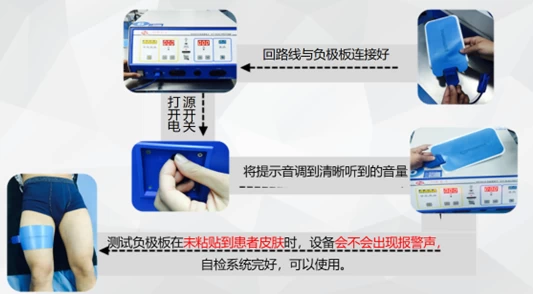
The electric surgical generator, movable electrode, and negative electrode plate together form a circuit. When the high-frequency current generated by the electrosurgical generator passes through human tissue, the time of each oscillation is extremely short, and ions are difficult to cause migration. They only vibrate in a viscous liquid to generate heat energy. When high-frequency current passes through the body, the active electrode instantly generates a large amount of heat energy at the target tissue, causing rapid dehydration and decomposition of cells, protein denaturation, and enabling electrosurgical equipment to achieve cutting, coagulation, and other functions; The negative electrode plate provides a safe channel for high-frequency current to flow out of the body, effectively preventing ectopic electric burns.
The main types of negative electrode plates are:
(1) metal electrode plates; The electrode has a hard texture and poor compliance. During surgery, gravity is used to make the electrode adhere to the patient's skin, making it difficult to ensure the effective contact area of the electrode. Especially when the patient needs to move, ectopic electric burns are prone to occur.
(2) Conductive adhesive electrode plate: Place the conductive material on the electrode in an appropriate position during use.
(3) The disposable electrode plate has good compliance and strong adhesion ability, which can ensure the effective contact area of the electrode plate, is not affected by the patient's position, and has low thermal effect. It has been widely used in various hospitals.
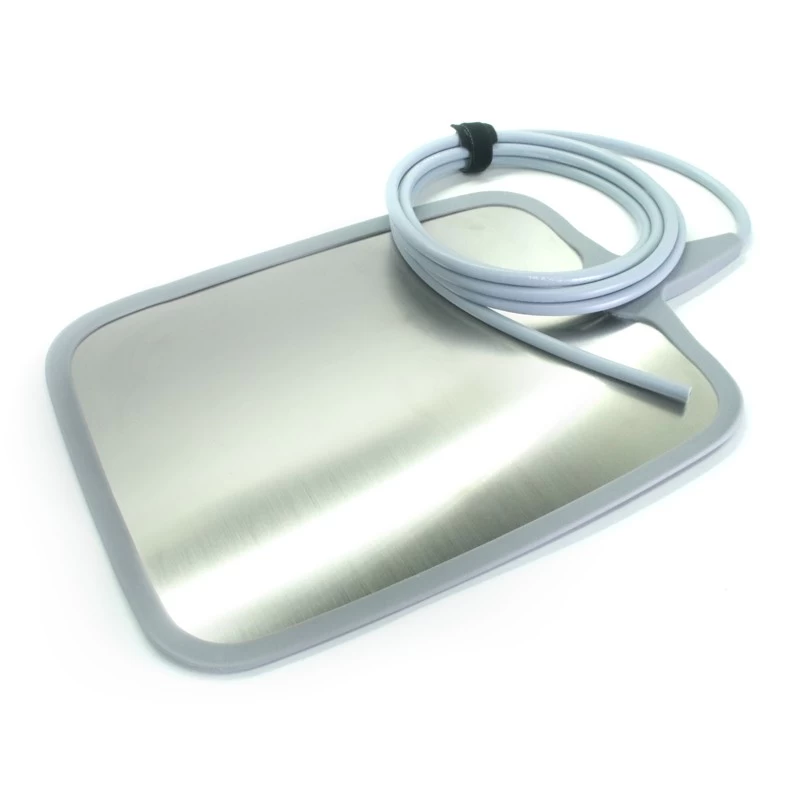
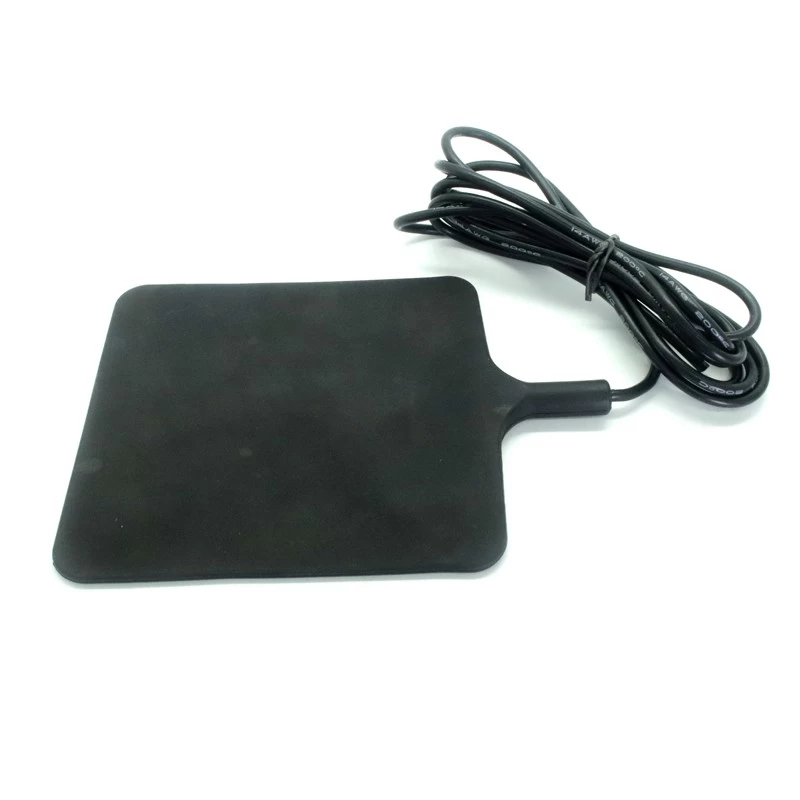
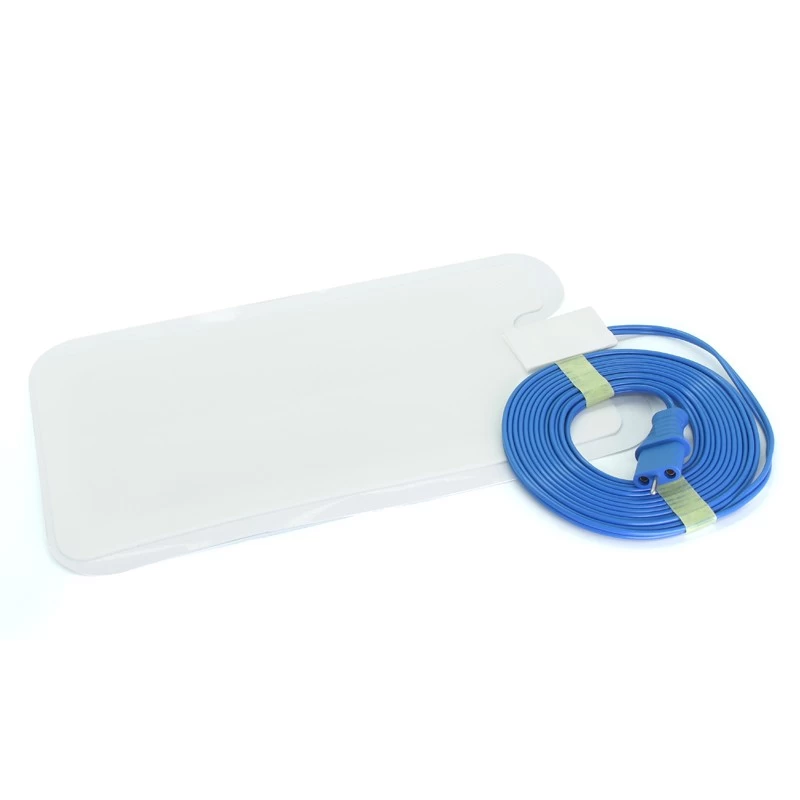
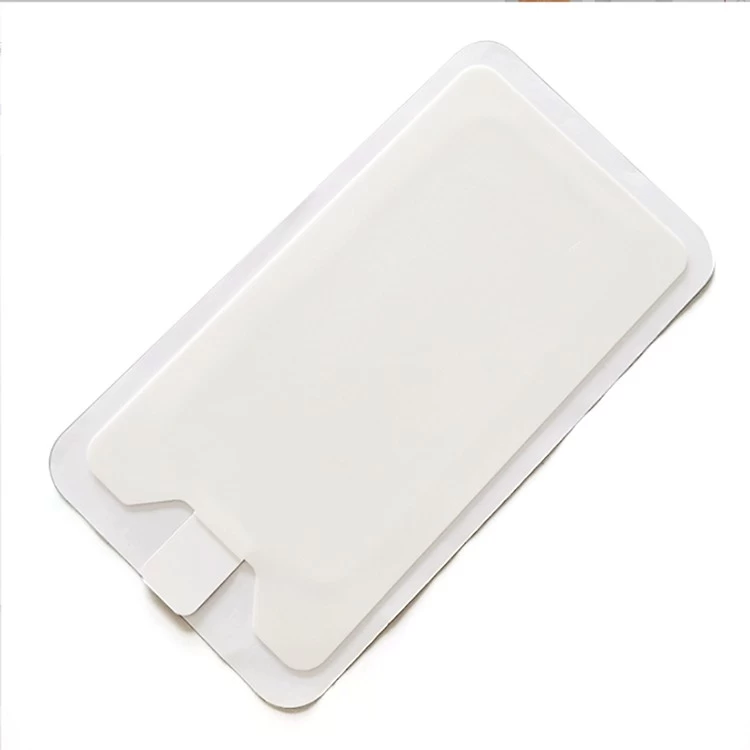
The usage of negative electrode plates
1. Correct use of negative electrode plate
2. Develop a scientific management system
Strictly manage electrical surgical equipment, always prioritize safety issues, keep detailed records of daily use and maintenance, and conduct regular inspections and repairs.
Choose the correct negative electrode plate
1. The conductive adhesive for the negative electrode plate is the key to preventing ectopic burns. The conductive adhesive should be selected with good ductility and a certain degree of ductility, so that the circuit electrode can fully adhere to the surface of the skin and reduce surface impedance; The conductivity uniformity, stability, and viscosity of conductive adhesive can ensure that the position of the circuit electrode does not change during patient displacement.
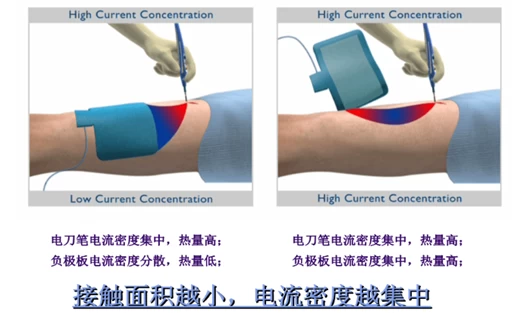
2. The type of negative electrode plate should be selected according to the patient's weight, and the negative electrode plate cannot be cut or folded. Adult plates can be used for weights greater than. 30 pounds, baby plates should be used for weights between 6-30 pounds, and newborn plates should be used for weights between 1-6 pounds. Newborns weighing less than 1 pound are recommended to use bipolar mode. For obese, emaciated patients, liquid working environments, and patients who require long-term activation of electric shell devices, the use of two plates should be considered.
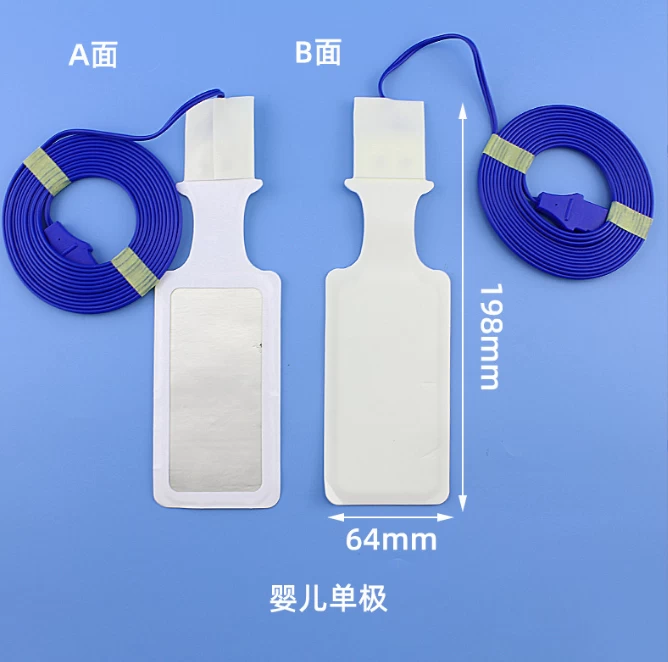
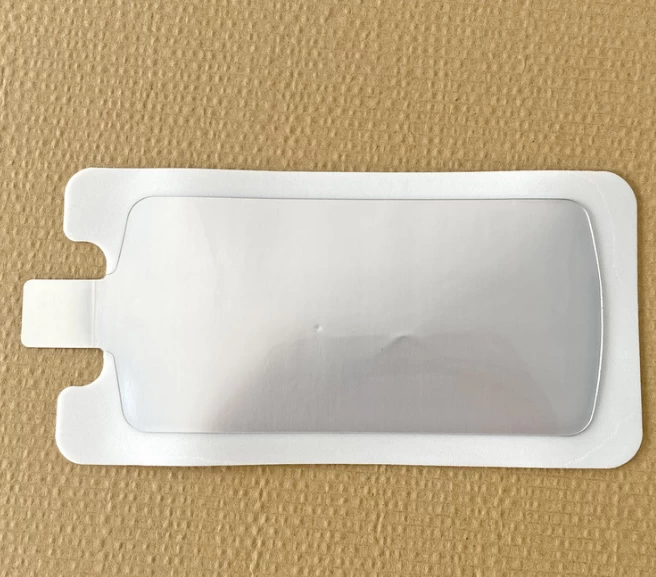
3.Preoperative preparation
During preoperative visits, patients should be informed that they are not allowed to carry metal jewelry, watches, hair clips, or removable dentures when using negative plates.
4. When patients use the negative electrode plate, skin cleaning should be carried out at the negative electrode plate, and if necessary, excessive hair should be removed to reduce discomfort caused by removing the negative electrode plate after surgery.
5.When placing the patient in a position, it is important to avoid contact between the patient's limbs and the surgical metal, as well as to avoid contact with the patient's own skin.
Selecting the Pasting Site
When pasting the negative electrode plate, an area with flat muscles and rich blood vessels should be selected, as close as possible to the surgical site.
Application field
Widely used in electrical surgery, it is paired with various high-frequency electric knife hosts and radiofrequency instruments, forming a circuit with the positive electrode of the high-frequency electric knife host. Usually used as a negative electrode during cutting and coagulation in electrosurgical procedures such as electric knives and pens.